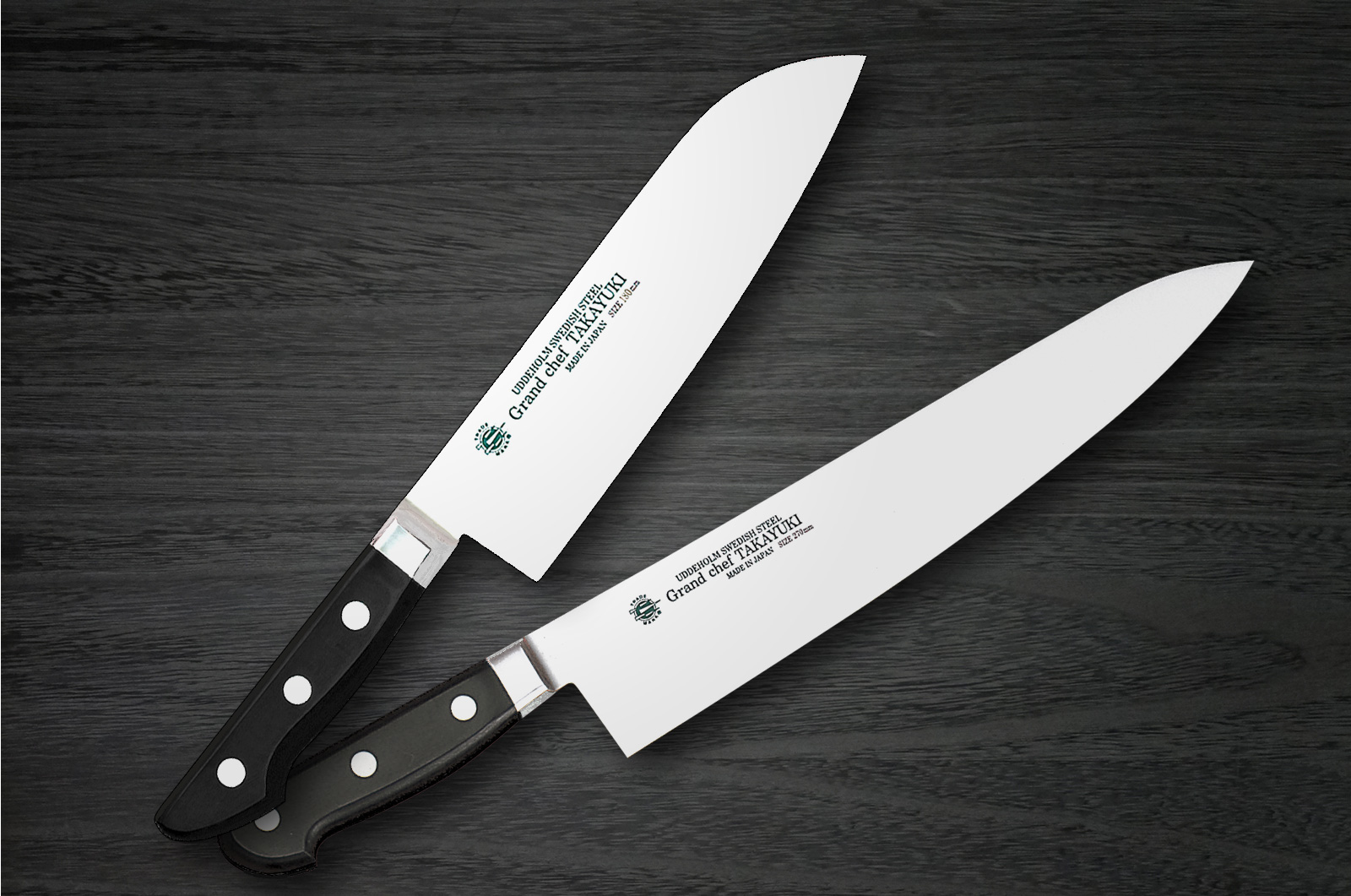Some customers ask us, “what is the difference, between “Gyuto” and “Santoku” knives?” — because they are both categorized “all purpose knives”.
“Gyuto” in Japanese is one of the most standard and globally-popular blade among western style knives, so called “Chef’s Knife”.
Gyuto has a slim blade for intricate tasks, and is one of the most versatile blade type, suitable design for cutting, slicing meats, vegetables and fishes.
So it is often categorized as all-purpose knife, together with Santoku knife.
Its length is generally 180~360mm, and the most popular is 210mm.
Recently in Japan, Santoku is actually used like Gyuto and the two types are the two-top for Japanese people.
“Santoku” knife is one of the all-round knife for meat, fish and vegetables.
Wider and rounded shape is suitable design for especially vegetables, but also cutting, slicing well for the fishes, meats.
It was developed in Japan in 19th century, a fusion of Japanese Nakiri (vegetable knife) and western chef knife (gyuto).
The first developed one is a variation of the Santoku, that is sometimes called “Bunka” Bocho. Its blade has angular outline on the spine.
And the shape of Bunka has gotten be rounded off as the current Santoku knife we use today.
Its length is 140~180mm, smaller than Gyuto to fit the hands of Japanese people and ladies in the world.
if you have any question about this article, please feel free to contact us.
Thank you and best regards,
All the Hocho-Knife staff
~~~~~~~~~~~~~~~~~~~~~~~~~~~~~~~~~~~~~~~~~~~~~~~~~~~~~~~~~~~~~~~~~~
“Hocho” represents Made-in-Japan (Sushi / Sashimi) Kitchen Knives,
that is the soul of the cook!
~~~~~~~~~~~~~~~~~~~~~~~~~~~~~~~~~~~~~~~~~~~~~~~~~~~~~~~~~~~~~~~~~~
mport Japan.com,Inc.
Florida, USA
Kyoto and Hyogo, JAPAN
